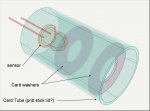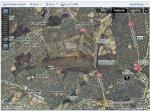toxicmouse
Senior Member
Hi all,
There is a very nice park near my house but unfortunately there is a guy carrying a shotgun who robs people who use the park. In the past 6 months the police have been unable to catch this guy, and the robbed toll has hit 50 people (including me). I think that this guy hides the gun in the park and enters without disguise- so I have hacked a digital camera to take pictures of everyone who enters the park, hoping that I will get a nice photo of the robber, and give the photo to the police.
The picaxe problem is this: the hacked camera works fine, but the sensor which senses that a person is approaching is not working well. I am using a PIR sensor, of the kind that is used in home security. The PIR goes off randomly, especially during the day. I think that the problem is that the sun is VERY strong here and the terrain is mostly rocky, so I think that the sensor is getting overloaded with IR reflected off the rocks. The sensor is mostly alright at night (when the camera is useless and I use a picaxe datalogger to record the time.)
I would like as many ideas as possible on sensors that could reliably pick us that someone is approaching from 5 to 10m, that is easy to hide and install (preferably next to the camera), and importantly- uses little power. The device needs to be on the ground for about a week undisturbed. I have tried premade devices that have a camera and sensor in one but as I said- the PIRs are unreliable outside in the sun, and I need a pretty good resolution on the photo.
Hopefully a picaxe and a little determination can get this guy caught, 50 cases of armed robbery with aggravating circumstances is not a joke in any country, and will probably put this guy in prison for a decade.
There is a very nice park near my house but unfortunately there is a guy carrying a shotgun who robs people who use the park. In the past 6 months the police have been unable to catch this guy, and the robbed toll has hit 50 people (including me). I think that this guy hides the gun in the park and enters without disguise- so I have hacked a digital camera to take pictures of everyone who enters the park, hoping that I will get a nice photo of the robber, and give the photo to the police.
The picaxe problem is this: the hacked camera works fine, but the sensor which senses that a person is approaching is not working well. I am using a PIR sensor, of the kind that is used in home security. The PIR goes off randomly, especially during the day. I think that the problem is that the sun is VERY strong here and the terrain is mostly rocky, so I think that the sensor is getting overloaded with IR reflected off the rocks. The sensor is mostly alright at night (when the camera is useless and I use a picaxe datalogger to record the time.)
I would like as many ideas as possible on sensors that could reliably pick us that someone is approaching from 5 to 10m, that is easy to hide and install (preferably next to the camera), and importantly- uses little power. The device needs to be on the ground for about a week undisturbed. I have tried premade devices that have a camera and sensor in one but as I said- the PIRs are unreliable outside in the sun, and I need a pretty good resolution on the photo.
Hopefully a picaxe and a little determination can get this guy caught, 50 cases of armed robbery with aggravating circumstances is not a joke in any country, and will probably put this guy in prison for a decade.


